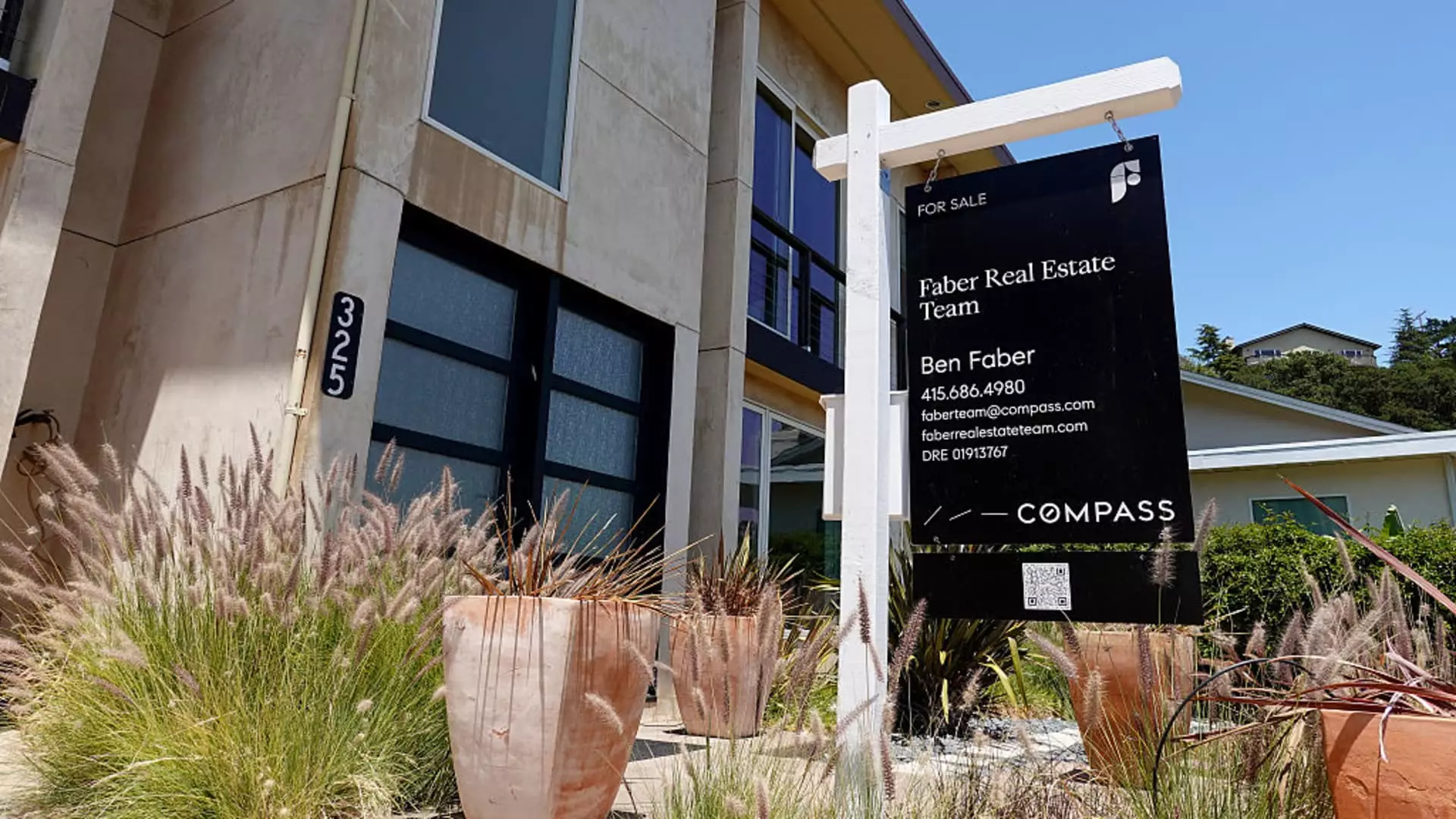In the complex landscape of today’s housing market, the shifting dynamics of supply and demand are calling into question what we once thought we understood about real estate. As we witness the rise of inventory alongside a noticeable decline in buyer interest, a cooling of home prices is no longer a hypothetical situation but a current reality that cannot be ignored. Recent statistics reveal an annual increase in home prices of merely 2.7% as of April, a stark contrast from the previously robust 3.4% rise in March. The remainder of this analysis will dissect these unsettling trends, dissecting their implications and potential outcomes.
A Flawed Paradigm
Let’s be clear: the statistics provided by traditional measures like the S&P CoreLogic Case-Shiller Index are often backdated and fail to cut through the noise. They are merely a snapshot of a constantly changing market landscape. Current readings, particularly those from innovative sources like Parcl Labs, show that home prices have plateaued. This raises critical questions about the reliability of the metrics we rely upon for real estate investment decisions, especially when historic data reflects a period that predated a major global pandemic.
The declining prices across various geographic segments juxtapose established urban markets against the once sizzling real estate hotbeds of the Sun Belt. While cities like New York and Chicago are experiencing seemingly remarkable increases in home prices—7.9% and 6% respectively—locations like Tampa and Dallas are witnessing negative growth. This flip-flop in market performance signals a significant transformation that could reshape the housing landscape for decades.
The Economic Ripple Effect
Critics may argue that the current deceleration in home prices is merely a natural correction, but the broader economic implications cannot be understated. A market marked by hasty bidding wars plus speculative fervor creates conditions ripe for fiscal instability. With the decade high in mortgage rates reaching over 7% while remaining buoyant, many potential homebuyers—especially first-time buyers—are being effectively driven out of the market. This demographic typically represents nearly 40% of home sales, but predictions nowadays suggest that they comprise a mere 30%. The strategic withdrawal of these buyers signifies deep-rooted issues that need urgent scrutiny.
There’s a glaring disconnect between newly constructed homes and market demand. Existing homeowners continue to cling to their low-rate mortgages like life rafts, inhibiting the flow of inventory into the market. This self-imposed scarcity constrains supply, providing a critical floor for prices even as demand wanes. One could argue that this dynamic creates an illusion of stability, but beneath this veneer lies potential volatility that echoes past market crashes.
Geographical Disparities: The New Norm
The concept of place-based market superiority—that some cities will always outperform others—has seen a dramatic recalibration. Historically reliable strongholds such as those in the Midwest and Northeast are not just holding their ground; they are now leading the charge. Meanwhile, once-celebrated markets like San Francisco and Miami barely scrapped together modest gains of just over 1%. Such discord might lead one to ponder: are we moving toward a more equitable distribution of economic prosperity, or are we merely witnessing the tumultuous rise of new hierarchies?
This geographical realignment can serve as a warning to those who inherently invest in triple-A markets without appreciating the interconnected dynamics at play across the nation. In an age where technology can shift power from traditional hubs to emerging ones, investors must scrutinize market fundamentals rather than historical precedents.
A Cautionary Tale: Understanding Risks
Despite the red flags waving in the current market, it’s crucial to recognize that we are not on the precipice of a second disaster akin to the subprime mortgage crisis. Current metrics on seller distress indicate that over 94% of sellers are immune to financial loss. The shadow of fear hangs in the air, but it’s founded more on past trauma than present reality.
Though prices are diminishing, the market has not yet exhibited the same precarious imbalances plaguing it a decade ago. Without a doubt, though, the hurdles presented now—sky-high mortgage rates and chaotic inventory levels—demand keen observation. The question looms large: how will market participants adapt to a landscape increasingly driven by economic fundamentals, rather than the momentary whims of speculation? The answer will not only dictate the future of housing prices but also define the larger economic trajectory in the years to come.


Leave a Reply